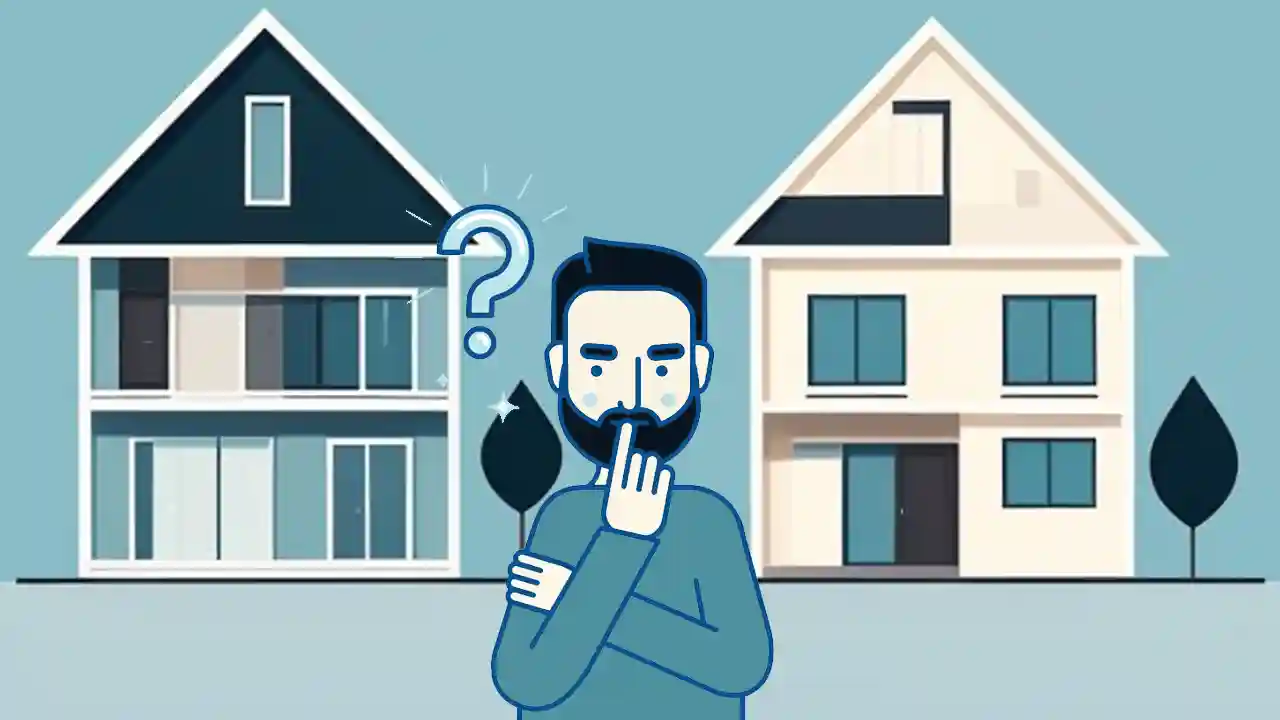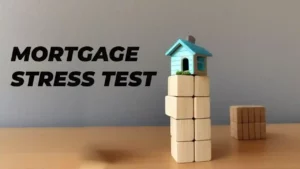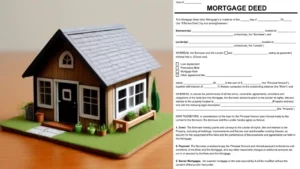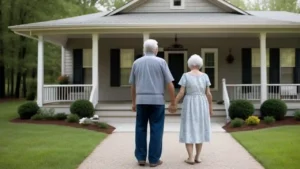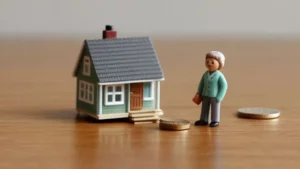Mortgagerateslocal.com – If you have a second mortgage on your home, you might be wondering what would happen if you stopped paying it. Maybe you are struggling and haven’t paid your second mortgage in 10 years. Maybe you think your home is worth less than what you owe on both loans. Or maybe you just want to get rid of the extra debt and simplify your life.
A second mortgage can be a home equity loan, a home equity line of credit (HELOC), or a piggyback loan. A second mortgage allows you to borrow money against the equity you have built up in your home, which is the difference between the value of your home and the amount you owe on your primary mortgage.
A second mortgage can be useful for various purposes, such as consolidating debt, paying for home improvements, covering emergency expenses, or financing a large purchase. However, a second mortgage also comes with costs and risks.
You have to pay interest and fees on the loan, and you increase your debt load. Most importantly, you put your home at risk of foreclosure if you fail to repay the loan. Foreclosure is the legal process by which a lender can take over your home if you default on your mortgage.
What Is a Second Mortgage?
A second mortgage is a loan that you take out using your home as collateral, after you already have a first mortgage on the property. A second mortgage can be a home equity loan, a home equity line of credit (HELOC), or a piggyback loan.
A home equity loan is a lump sum of money that you borrow and repay in fixed monthly installments. A HELOC is a revolving line of credit that you can draw from and repay as needed. A piggyback loan is a second mortgage that you use to finance part of the down payment or closing costs of your first mortgage.
A second mortgage is a junior lien, which means that it is subordinate to the first mortgage. This means that if you default on your first mortgage and the lender forecloses on your home, the first mortgage lender gets paid first from the proceeds of the sale, and the second mortgage lender gets paid only if there is any money left over. If there is not enough money to pay off both mortgages, the second mortgage lender gets nothing and loses its security interest in your home.
What Happens If You Don’t Pay Your Second Mortgage?
If you don’t pay your second mortgage, the lender has the right to take legal action against you. Depending on your state’s laws and the terms of your loan agreement, the lender can:
- Foreclose on your home. The lender can initiate a judicial or nonjudicial foreclosure process to sell your home and recover the debt. However, this option is not very common, because the lender has to pay the costs of the foreclosure and may not get enough money from the sale to cover the debt, especially if your home is underwater (worth less than what you owe on your mortgages). The lender may also have to wait until the first mortgage lender forecloses on your home, which can take a long time.
- Sue you for the deficiency. The lender can sue you for the difference between the amount you owe on the second mortgage and the amount they get from the foreclosure sale (if any). This is called a deficiency judgment. The lender can then try to collect the judgment by garnishing your wages, levying your bank accounts, or placing liens on your other assets. However, some states do not allow deficiency judgments for second mortgages, or limit the amount or time that the lender can pursue them.
- Charge off the debt. The lender can write off the debt as a loss and report it to the credit bureaus as a charge-off. This will negatively affect your credit score and make it harder for you to get new credit in the future. The lender can also sell the debt to a collection agency, which can harass you and sue you for the debt.
How Long Does the Lender Have to Take Action?
The lender does not have unlimited time to take action against you for your unpaid second mortgage. There is a statute of limitations that limits the time that the lender can foreclose on your home or sue you for the deficiency.
The statute of limitations varies by state and by the type of loan. For example, in Arizona, the statute of limitations for a home equity loan is six years, while for a HELOC it is four years. In Washington, the statute of limitations for a second mortgage is six years, unless the lender accelerates the loan, in which case it is three years.
The statute of limitations starts running from the date of your last payment or the date of the loan’s maturity, whichever is later. However, the statute of limitations can be tolled (paused) or restarted by certain events, such as:
- Making a partial payment or entering a payment plan with the lender
- Acknowledging the debt in writing or verbally
- Being sued by the lender or filing for bankruptcy
Therefore, you should be careful not to do anything that can extend the statute of limitations and give the lender more time to take action against you.
What Can You Do to Deal With Your Second Mortgage Debt?
If you haven’t paid your second mortgage in 10 years, you may be wondering what you can do to resolve your situation and protect your home from foreclosure. Here are some possible options:
- Negotiate with the lender. You can try to contact the lender and negotiate a settlement or a modification of your loan terms. For example, you can offer to pay a lump sum that is less than what you owe, or ask for a lower interest rate, a longer repayment period, or a principal reduction. The lender may be willing to accept your offer, especially if they think that they have little chance of recovering the debt through foreclosure or litigation. However, you should be aware of the potential tax consequences and credit implications of settling your debt for less than what you owe.
- Refinance your mortgages. You can try to refinance your first and second mortgages into one new loan with a lower interest rate and a more affordable monthly payment. This can help you save money and simplify your debt management. However, refinancing may be difficult if you have bad credit, low income, or negative equity in your home. You may also have to pay closing costs and fees for the new loan.
- Sell your home. You can try to sell your home and use the proceeds to pay off your mortgages. This can help you avoid foreclosure and get rid of your debt. However, selling your home may not be easy if the market is slow, your home is in poor condition, or you owe more than what your home is worth. You may also have to pay commissions, taxes, and other expenses related to the sale.
- File for bankruptcy. You can file for Chapter 7 or Chapter 13 bankruptcy to stop the lender from foreclosing on your home or suing you for the deficiency. Bankruptcy can also help you discharge or restructure your other debts, such as credit cards, medical bills, or personal loans. However, bankruptcy has serious consequences for your credit and your future financial opportunities. You should consult a bankruptcy attorney before filing for bankruptcy to understand the pros and cons of this option.
How Can Bankruptcy Help You Get Rid of Your Second Mortgage?
One of the benefits of filing for bankruptcy is that you may be able to get rid of your second mortgage and keep your home. This is possible through a process called lien stripping, which is available in Chapter 13 bankruptcy and, in some cases, in Chapter 7 bankruptcy.
Lien stripping is a way of eliminating a junior lien, such as a second mortgage, that is not secured by any equity in your home. For example, if your home is worth $300,000 and you owe $320,000 on your first mortgage and $50,000 on your second mortgage, your second mortgage is not secured by any equity, because the value of your home is less than the amount of your first mortgage. In this case, you can strip off your second mortgage and treat it as an unsecured debt in your bankruptcy.
In Chapter 13 bankruptcy, you can strip off your second mortgage by filing a motion with the court and proving that your home is worth less than what you owe on your first mortgage. You will then pay a portion of your second mortgage debt, along with your other unsecured debts, through your Chapter 13 repayment plan, which lasts three to five years.
The amount you pay depends on your income, expenses, and the value of your nonexempt assets. At the end of your plan, the remaining balance of your second mortgage debt will be discharged, and the lien will be removed from your home.
In Chapter 7 bankruptcy, you can strip off your second mortgage only if you live in a jurisdiction that follows the 11th Circuit Court of Appeals’ decision in McNeal v. GMAC Mortgage, LLC, which allows lien stripping in Chapter 7 bankruptcy.
However, this decision is not binding in other circuits, and most courts do not allow lien stripping in Chapter 7 bankruptcy. Therefore, you should check with a bankruptcy attorney in your area to see if lien stripping is available in your case.
Conclusion
If you haven’t paid your second mortgage in 10 years, you may be facing the risk of foreclosure, litigation, or collection. However, you have some options to deal with your second mortgage debt and protect your home from foreclosure.
You can try to negotiate with the lender, refinance your mortgages, sell your home, or file for bankruptcy. Bankruptcy can help you stop the lender from taking action against you and, in some cases, get rid of your second mortgage altogether. However, bankruptcy is not a decision to be taken lightly, and you should consult a bankruptcy attorney before filing for bankruptcy.
